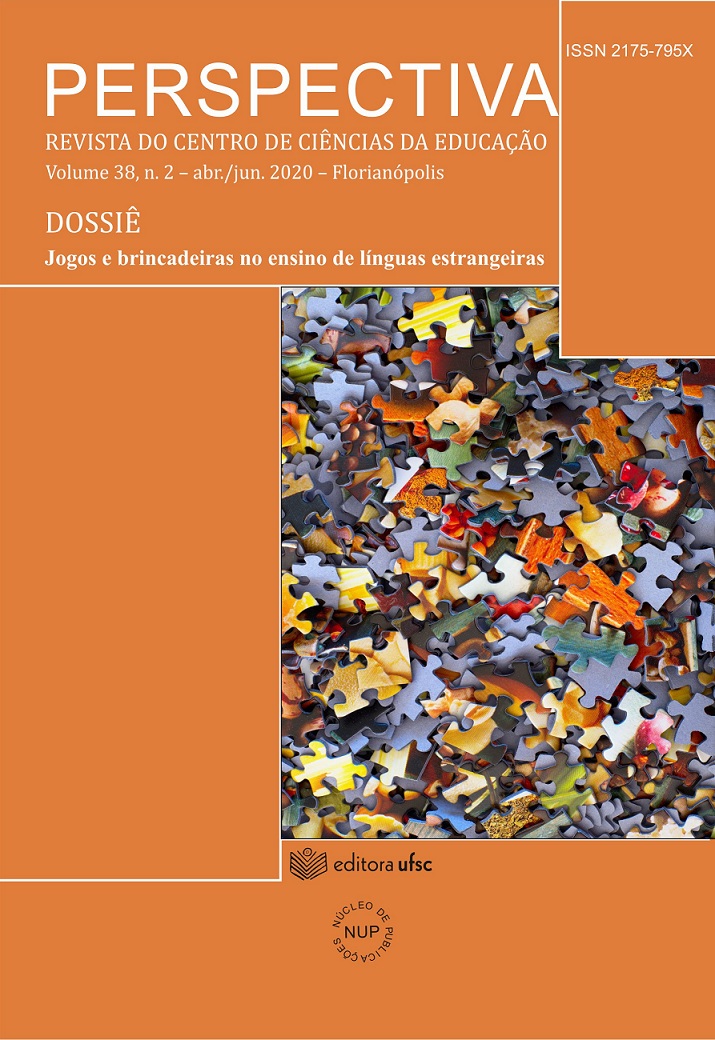Image and education: a study on the educative potential of images through the comprehension of imago and its influence on exercise of thinking
DOI:
https://doi.org/10.5007/2175-795X.2020.e65854Abstract
The aim of the text is to reflect on the use of images as an educative element having as parameter the medieval concept of imago and its importance for the construction of the thought. Our reflection arises from the consideration that images, since the 20th century, are leading the communication among people and therefore becoming interlocutors of ideas and information. However, their relevance in the educational field is still minor. In general, the image is used to make learning more gentle. In view of this, we raised as a hypothesis: the modus as the images were used as a pedagogical resource in other social periods would be related to the human formation and, consequently, different from the way we usually use today, in other words, limiting them to a visual resource. Our reflections consider the image on its three fields as in the medieval concept of imago: material image, image with imagination and image with the divine likeness. With these prepositions established, we emphasize that our approach will have as theoretical principle the Aristotelian fundamentals which lead us to see the image as a mental process, essential to the thinking process and social history, presenting us the man as the epicenter of social construction. We consider that these two principles will enable us to think of the image as an educative resource under the perspective of imago, once the Aristotelian formulations were this concept’s base of construction in the Middle Ages and history is the basis for understanding men’s action in time.
References
AQUINO, Tomás. Suma Teológica. Disponível em: http://permanencia.org.br/drupal/node/8
ARISTÓTELES. Dos sentidos e dos sensíveis. In: ARISTÓTELES. Parva Naturalia. São Paulo: Edipro, 2012.
BASCHET, Jérôme. A civilização feudal: do ano mil à colonização da América. São Paulo: Globo, 2006.
BENSANÇON, Alain. A imagem proibida: uma história intelectual da iconoclastia. Rio de Janeiro: Bertrand Brasil, 1997.
BÍBLIA DE JERUSALÉM. 1.ª ed. 9. reimp. São Paulo: Paulus, 2013.
BURKE, Peter. Testemunho Ocular: história e imagem. São Paulo: EDUSC, 2004.
CARDOSO, Isabel Maria Leitão Cortes Alçada. Encarnação e Imagem uma abordagem histórico-teológica a partir dos três discursos de São João Damasceno Em Defesa das imagens sagradas. Lisboa: Universidade Católica Portuguesa - Faculdade De Teologia: 2013. Tese de doutoramento.
FRANCO JUNIOR, Hilário. A Idade Média: nascimento do Ocidente. São Paulo: Brasiliense, 2006.
JOLY, Martine. Introdução à Análise da Imagem. Lisboa: Ed. 70, 2007.
LE GOFF, Jacques. As raízes medievais da Europa. Petrópolis: Vozes, 2007.
MANGUEL, A. Lendo imagens. São Paulo: Companhia da Letras, 2001.
PEASE Allan; PEASE, Bárbara. Desvendando os Segredos da Linguagem Corporal. Rio de Janeiro: Editora Sextante, 2005. E-book.
PLATÃO, República. Tradução Maria Helena da Rocha Pereira. 9. ed. Lisboa: Fundação Calouste Gulbbenkian, 2001.
RÜSEN, Jörn. Teoria da História: uma teoria da história como ciência. Curitiba: UFPR, 2015.
SCHMITT, Jean-Claude. O corpo das imagens: ensaios sobre a cultura visual na Idade. Bauru: Edusc, 2007.
SEVCENKO, Nicolau. A corrida para o século XXI: no loop da montanha-russa. SP: Companhia das Letras, 2001.
Downloads
Published
How to Cite
Issue
Section
License
This journal provides open access to all of it content on the principle that making research freely available to the public supports a greater global exchange of knowledge. Such access is associated with increased readership and increased citation of an author's work. For more information on this approach, see the Public Knowledge Project, which has designed this system to improve the scholarly and public quality of research, and which freely distributes the journal system as well as other software to support the open access publishing of scholarly resources. The names and email addresses entered in this journal site will be used exclusively for the stated purposes of this journal and will not be made available for any other purpose or to any other party.
The Perspectiva allow the author(s) yo hold the copyright without restrictions as well as publishing rights. If the paper will be republished later in another format, the author(s) should inform that it has originally been published as article in Perspectiva Journal and quote the complete references.



